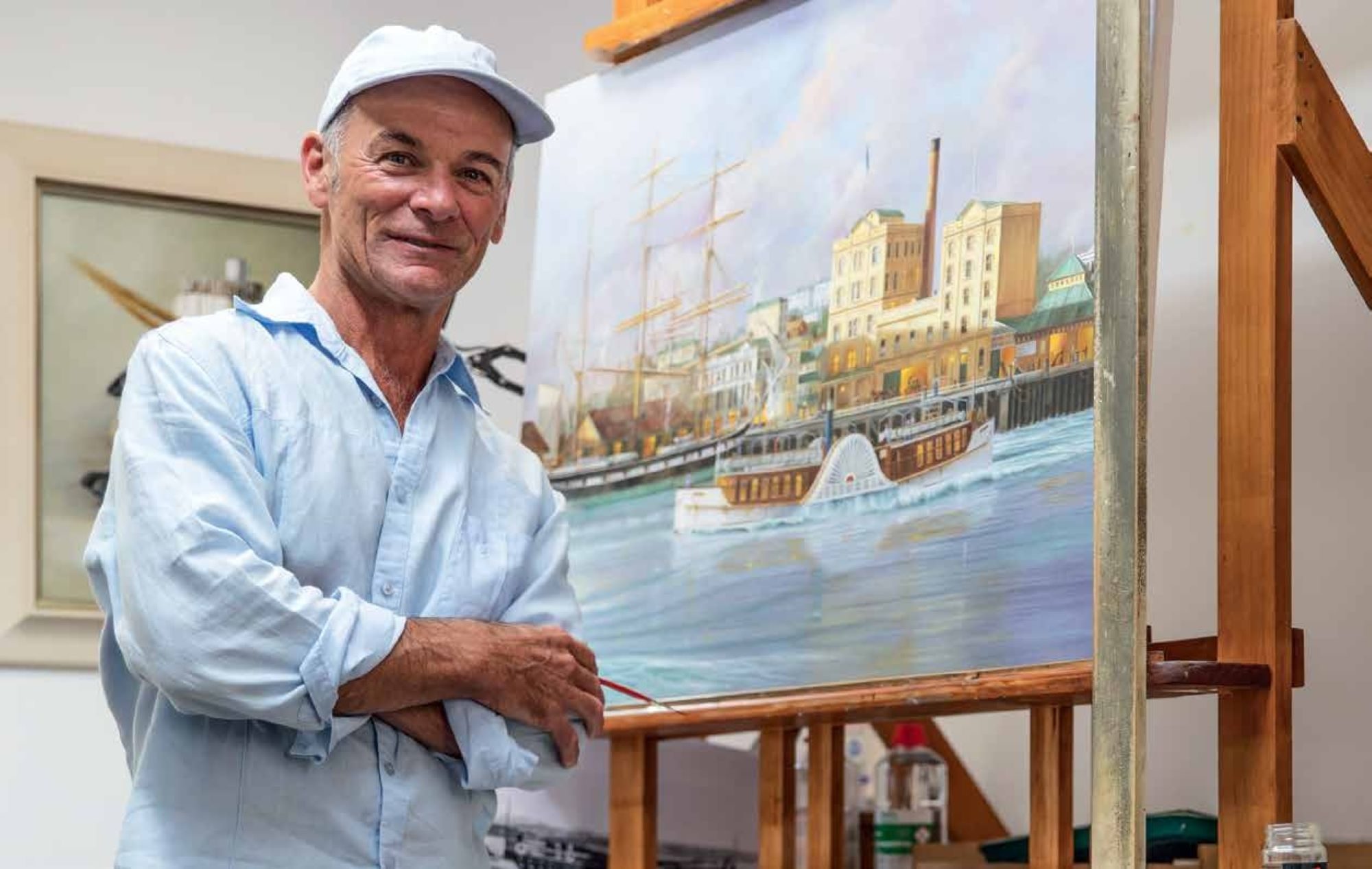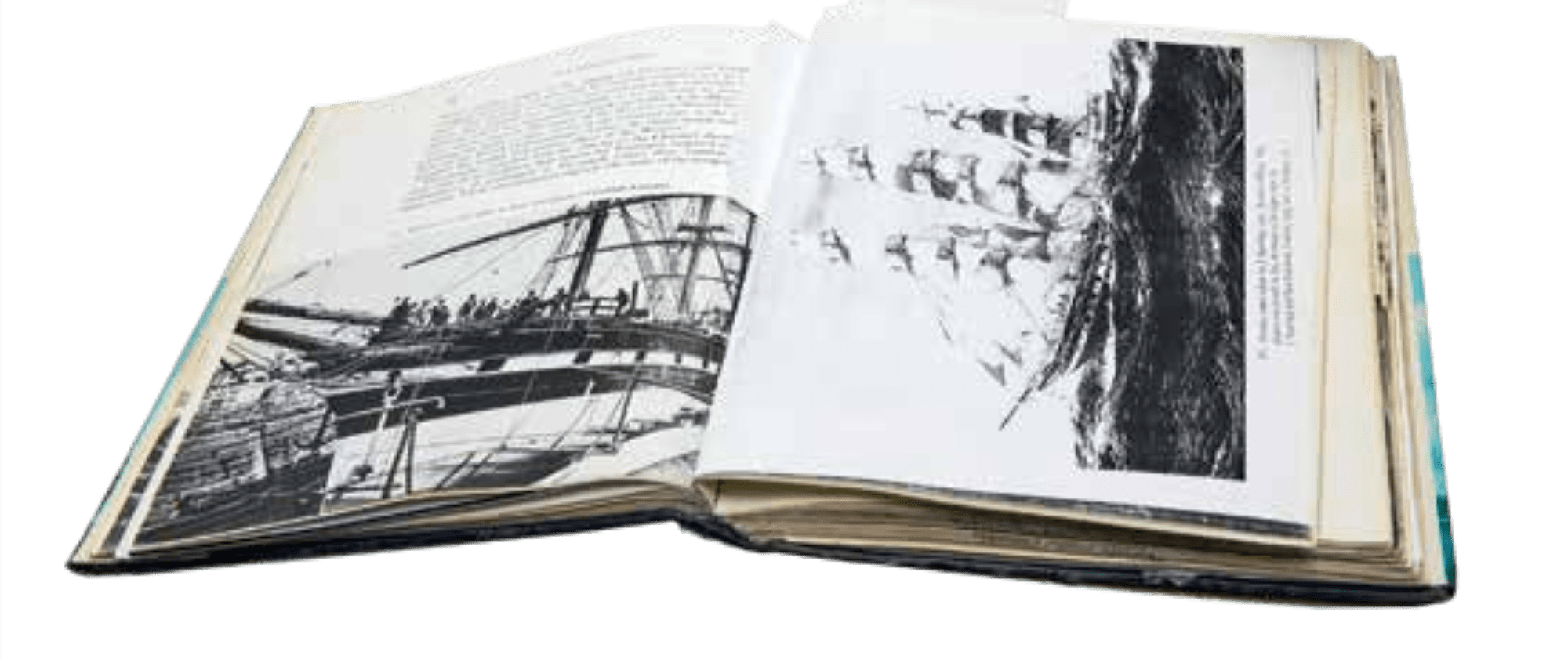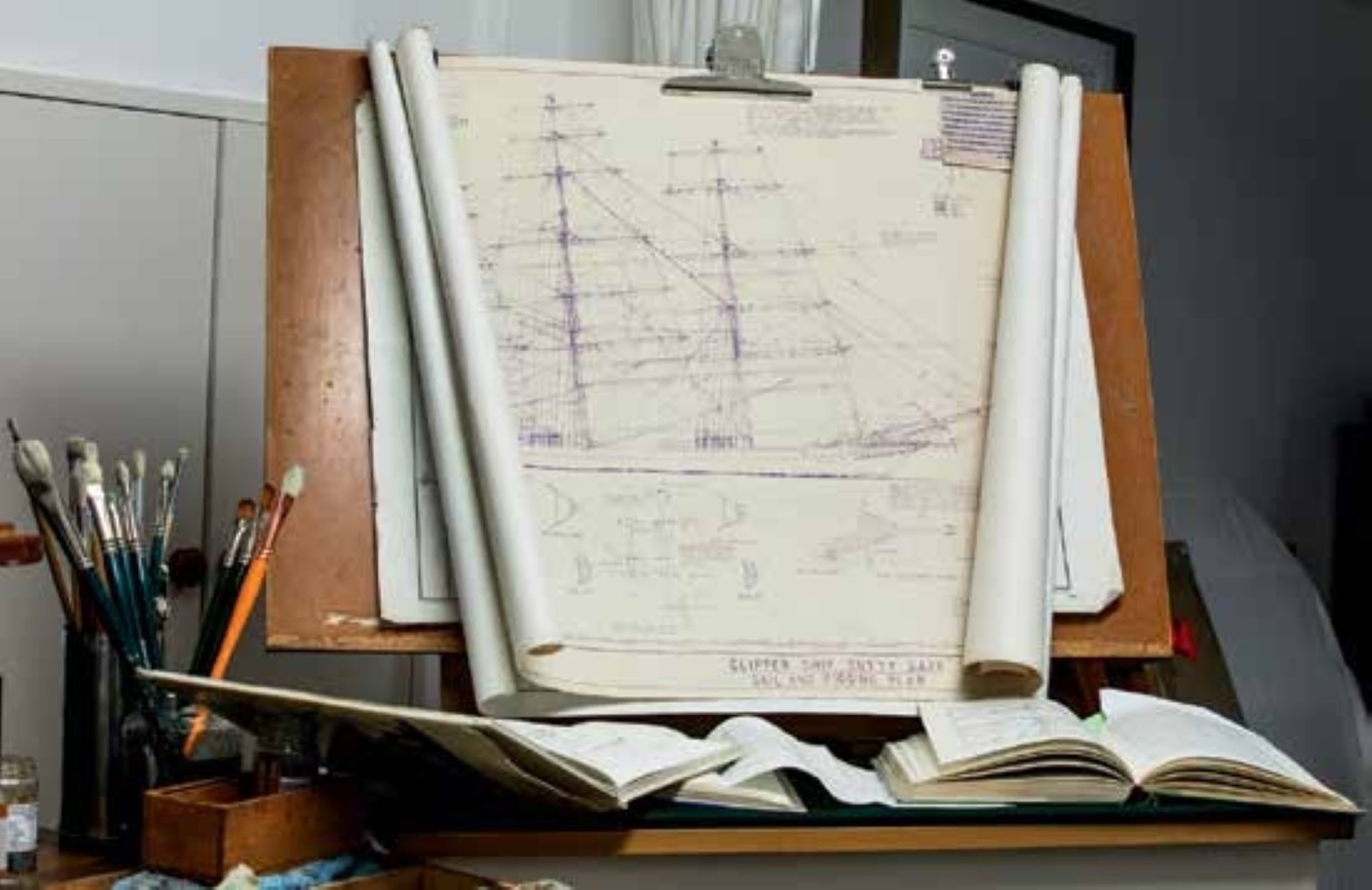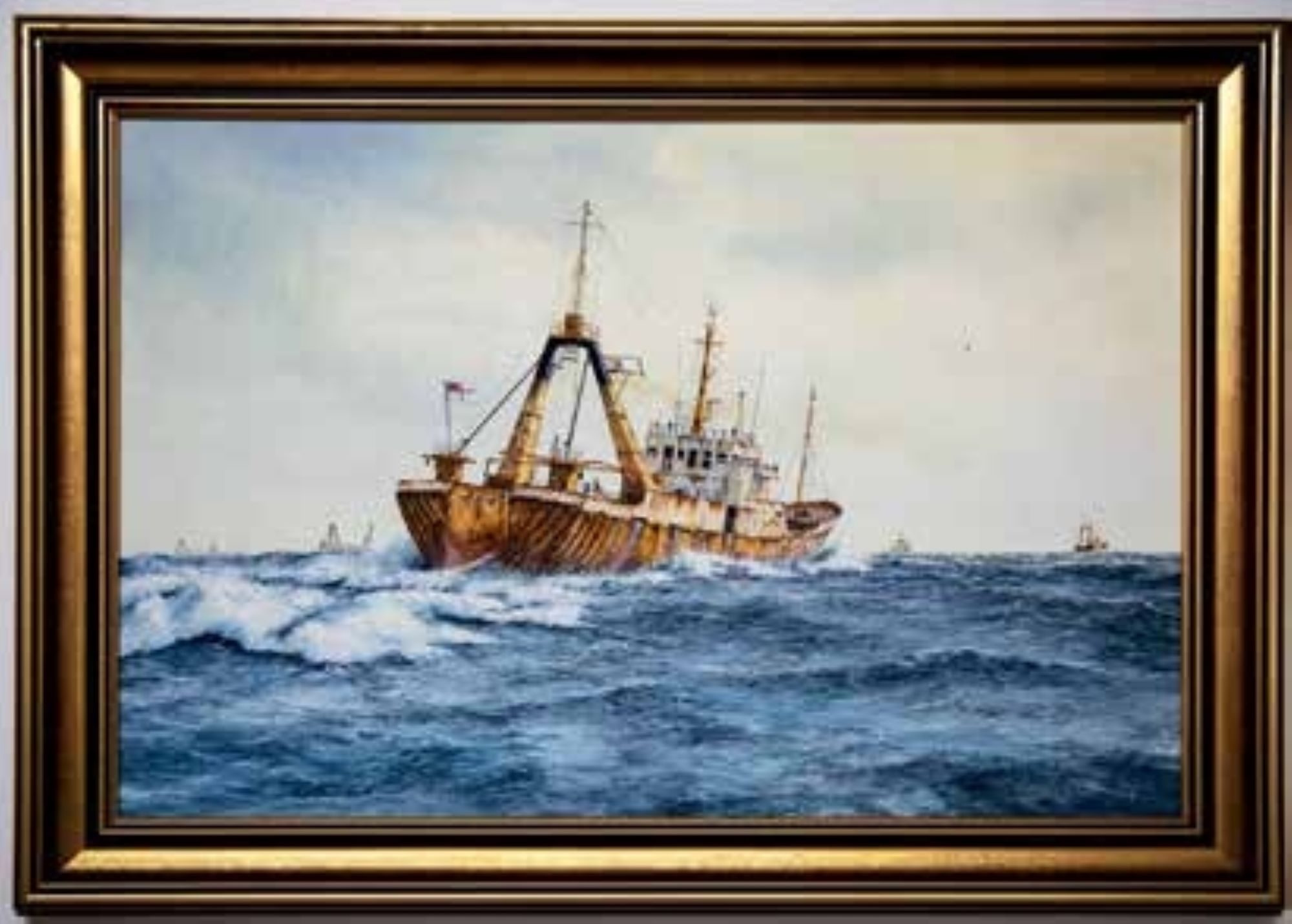

Nelson-based Sean Garwood is a prominent and accomplished marine artist, who has literally lived his expression – on paper, canvas and in three dimensions – by being a Master Mariner too.
“You need to have lived and worked on the ocean to be able to paint the ocean.” So says Nelson-based marine artist Sea Garwood, of the speciality that he says is the “most difficult genre to master.”
And master it he has done. All it takes is a look at his extra-ordinary paintings to appreciate this. These are works that transcend technical accuracy and verity, to become unique works of art as well. But it hasn’t been an easy passage for Sean to get here.
“Fishing was my life,” he recalls. “I’ve done commercial fishing in many places and with many shipmate – Australians, New Zealanders, Norwegians, South Africans,.” Sean has been a deep-sea trawler skipper. He’s also done much scientific research on orange roughy for Sea Harvest. And exploratory work, looking for new fishing grounds in a joint venture with Australian companies Pescanova, Sea Harvest, Austral K. He’s spent time in the Southern Ocean. Rugged time. He became the youngest deep sea master at age 21.

Then one day in 2004 he said to Ligliana, his wife: “That’s it. I’ve had enough of fishing. Let’s see how the art thing goes.”
And it’s gone pretty well since then. As Sean says, “it’s a gamble – but you gotta back yourself.”
To go back a bit, there is an artistic heritage lurking beneath the on-the-ocean action men heritage of Sean and his family. His father Michael was a Fleet Air Arm Engineer. Though born in England, Sean grew up in Freemantle, Western Australia, where, after sailing small boats on the Swan River – Cherubs, Flying Ants – he “went to work on tug boats, pilot boats, then the offshore fishing vessels. I lived a nomadic life.”
At age 21 Sean got a skippers’ ticket, and “went to sea with Dad on pilot boat.
“All the while I watched him paint.” Sean’s father had forged a career as a successful full-time artist. “And I kept asking myself, ‘Do I go to sea, or do I become an artist.”
In the end he did both.
In 1990 he met Ligliana. They married in 1993.
He followed his father’s dual life, for Michael was also a wideranging artist (in terms of subject matter), doing paintings of the Aussie outback, and quirky subjects like old tractors. And doing commissioned paintings of their fleet for a shipping company.
Sean’s not simply a painter either. Like all marine artists, Sean is deeply involved with historical research to get the paintings just right. It’s an essential and significant part of the preparation and process of any new painting, especially of historical maritime scenes and vessels. But Sean admonishes any possible assumptions here: “Never copy a photograph. I never do that. They are only used for reference.’ His studio is bursting with old books, some quite rare volumes, showing the lines and specs of old sailing and steam vessels.
That’s because Sean believes there must be a deep-seated synergy in the coming-together of all the elements of a painting of a maritime subject. First there’s all the detail of the rigging of a clipper, or the superstructure of a steamship. Then, “It seems strange to say this – almost self-explanatory – but the sea must look wet. And it’s easy for viewers to see if in the construction of the image, it appears that the vessel has been cut and pasted on the ocean…” That’s where the profound know-how, gleaned from years at sea, has no substitute.

From his website: “Sean Garwood’s almost obsessive attention to detail creates works that are rich in light and texture – the folds of fabric, the toughness of dry leather, the glint of light on a belt buckle- and it’s in these details where one begins to truly appreciate Garwood’s technical and compositional skills.” This ain’t just hard-sell blurb. As a painter myself, and seeing him at work in his studio; I know this is all true. You simply cannot fake this stuff. “Garwood has also studied in depth the techniques used by the old masters, which is essential for creating fine oil paintings. These traditional methods of oil painting will surely endure the test of time and increase the longevity of the investment.” That’s true too: Sean’s paintings command serious prices from discerning collectors.
Sean reminds us, “Cameras flatten the sea, Painters accentuate it.” But they can only do this if they (the painters) really know their environment… “It also extends into painting by instinct.”
In this regard, Sean mentions his admiration for the classic marine artists Montague Dawson and Jack Spurling. Sean’s own heritage? He’s a descendant of Admiral Eliab Harvey, who was captain of the Temeraire at the battle of Trafalgar. The earlier family name being Harvey-Garwood.
Like them, Sean maintains a strict regime of work. “My habit is to start at 5:30am and paint through to 4pm every day. After that I have a property of five acres to manage.
Starting in the studio early says Sean, “Puts you in the zone. Three hours before breakfast; and you’re always on the front foot.
“This quiet property” gesturing to the leafy hillside behind their home Gumnut Cottage, near Atawhai just outside of Nelson, “is conducive to painting. It’s good to be fit too; a hard day’s work and it’s good to be in the studio.”
His artwork and career took a big fillip when in 2015 he visited Shackleton’s Hut with Antarctic New Zealand. Eighteen months of painting followed that seminal experience, culminating at a sell-out exhibition at the Nelson Arts centre in 2017. Those works also turned into a book; and designs on New Zealand stamps. In fact Sean has produced two books – A Painted Voyage published by Fine Arts Society New Zealand. It’s a beautifully presented 107page book providing a condensed version of our maritime history. And Sean Garwood’s Antarctica. Both books and a selection of prints are available on Sean’s website.

Beyond that, Sean is represented by the Jonathan Grant Gallery in Parnell, Auckland “A discerning buyer trusts a gallery and its director. For me, it’s a good name to have behind the work.” Sean is also a member of the Fine Arts Society of New Zealand.
Sean’s classic marine art took a foray into living three dimensions, in the acquisition and restoration of the beautiful little gaff-rigged sloop Tinker.
“Ligliana spotted it. Tinker was like a little dog at the SPCA screaming out to be saved. So that’s what we did.”
Built in 1954 by two brothers in Banks Peninsula, from double diagonal kauri, Tinker was lovingly restored to better than her original state. She now graces an inner berth at Nelson Marina, and the bay under sail as often as Sean can get away from the easel in his studio.
“Marine art is a dying art, says Sean, almost wistfully. “There are few notable marine artists in the world today compared, say, to landscape. The demands on time, patience, research… “It’s a rare thing to record history on canvas. And there’s all that talking and research with historians and libraries.”
But I’d think otherwise. Just take a look at the life inherent in any of his paintings; and how much they are sought-after. No fading away here, but the vivid life of the sea and boats of all kinds, in his blood. BNZ
FOR FURTHER INFORMATION VISIT https://seangarwood.co.nz/




